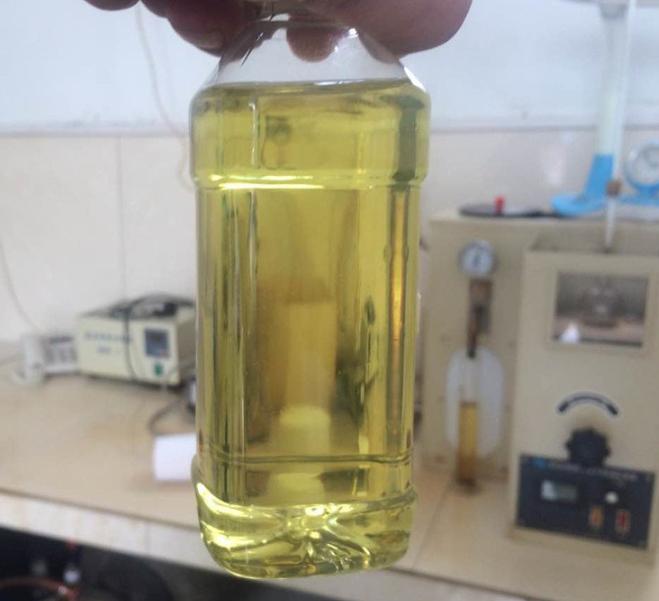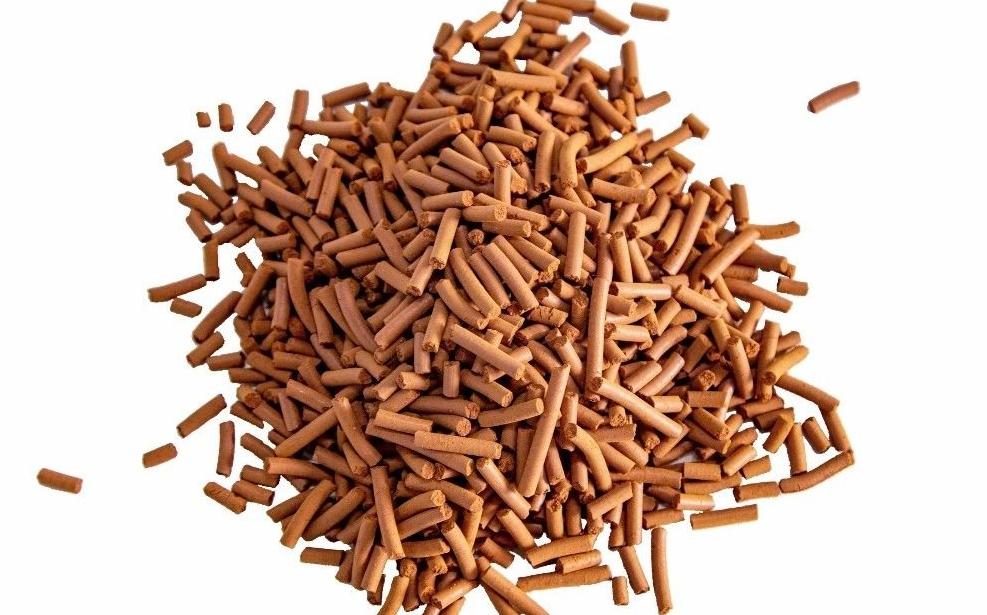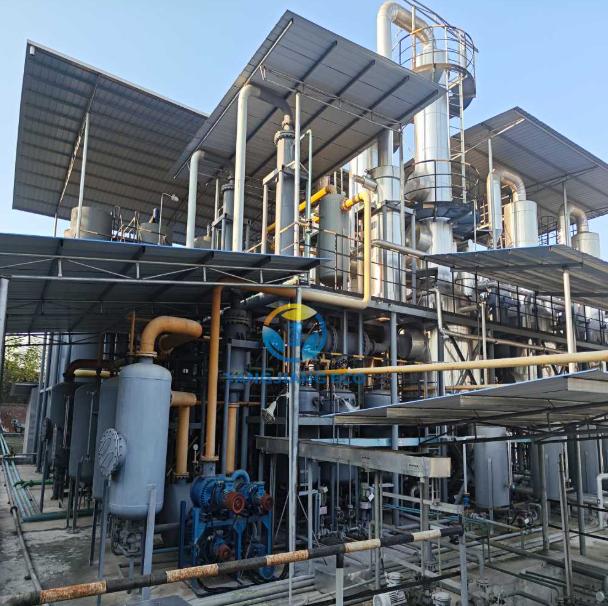The global pursuit of clean fuels has put diesel desulfurization in the focal position among oil refining industry processes. Ultra-low sulfur diesel is no longer a luxury but a necessity to achieve stringent environmental protection regulations and suppress toxic emissions. At present, diesel desulfurization technology has achieved remarkable progress, e.g., possessing multiple efficient sulfide removal methods. Of them, hydrodesulfurization and oxidative desulfurization are the most widely known methods.
I will then delve deeper into these two technologies, comparing their performance, with the strongest and weakest points of each, and their applications in real life.
Overview of Diesel Desulfurization Methods

Sulfur compounds, such as dibenzothiophene (DBT) and its derivatives, contribute to air pollution, acid rain, and catalyst poisoning in downstream processes.
Several methods exist to reduce sulfur content, but two technologies dominate.
Hydrodesulfurization
Hydrodesulfurization is a catalytic chemical process for the removal of sulfur from diesel fuel by its reaction with hydrogen at high pressure and temperature. Sulfur compounds in the process are transformed into hydrogen sulfide gas and are stripped out of the fuel stream. Cobalt-molybdenum and nickel-molybdenum over alumina are common catalysts used to make the reaction more efficient.

This process is widely utilized in big refineries due to its ability to produce extremely low sulfur content and its suitability for a developed infrastructure. However, the process is a high-energy process due to the high temperature and pressure conditions. In addition, certain complex sulfur-containing compounds such as 4,6-dimethyldibenzothiophen,e cannot be removed completely, even with harsh reaction conditions.
Oxidative Desulfurization
Oxidative desulfurization is milder and eco-friendly than hydrodesulfurization. Instead of hydrogenation, this process uses oxidizing agents—such as hydrogen peroxide—preferably in the presence of catalysts, to oxidize sulfur compounds to sulfoxides and sulfones. These oxidized products are more polar in nature and can be easily separated from diesel fuel by liquid-liquid extraction or adsorption techniques.

The most important advantages of oxidative desulfurization include decreased energy consumption, gentle operating conditions, and higher efficiency in the elimination of refractory sulfur-containing compounds that are resistant to normal hydrodesulfurization. Oxidative desulfurization is normally a multi-step procedure that requires very tight control of chemical reagents, a factor that can affect scalability and process safety on an industrial scale.
Hydrodesulfurization vs. Oxidative Desulfurization: Comparison
We learn from the above that hydrodesulfurization and oxidative desulfurization are both widely practiced to produce ultra-clean diesel but employ radically different technical paths. Hydrodesulfurization rests on catalytic hydrogenation under high pressure and heat, while oxidative desulfurization employs oxidants that convert the sulfur compounds into more polar species for facile elimination.
These variations impact not only the effectiveness of desulfurization, but also on the basis of total energy consumption, treatment cost, safety of operation, and applicability for different scales of processing.
The following table provides a detailed comparison between the two methods across key technical and operational dimensions:
| Aspect | Hydrodesulfurization | Oxidative Desulfurization |
| Operating Conditions | High temperature and high pressure | Mild temperature and near-ambient pressure |
| Removal Capability | Effective for most sulfur species; less efficient for complex molecules | Highly effective for complex, hard-to-remove sulfur compounds |
| Energy Demand | Higher, due to hydrogen use and thermal requirements | Lower to moderate |
| Process Structure | Single catalytic process | Multi-step (oxidation + separation) |
| Industrial Maturity | Fully commercialized, widely implemented | Emerging, gaining adoption |
| Best Use Case | Large-scale refineries seeking stable throughput | Small/medium operations or complementary use |
In short, hydrodesulfurization offers consistency and high throughput, making it the mainstream choice for large industrial refineries. Oxidative desulfurization stands out for its ability to handle difficult sulfur compounds under much milder conditions, making it attractive as a complementary or decentralized solution.
Challenges of Using Hydrodesulfurization and Oxidative Desulfurization

Although hydrodesulfurization and oxidative desulfurization are widespread treatments in ultra-clean diesel production, both come with extreme practical issues in commercial application.
- High Equipment Costs and Needs: Hydrodesulfurization requires high temperature and pressure, as well as proprietary hydrogen supply systems and long-lived catalysts. It translates to excessive capital investment and operating expenses, along with stringent safety control.
- Challenging to Break Sterically Hindered Sulfur Compounds: Conventional hydrodesulfurization is not able to eliminate sterically hindered sulfur compounds, for example, 4,6-dimethyldibenzothiophene. Oxidative desulfurization can treat these compounds but generally involves multi-step procedures, which can make industrial processes complicated.
- Complex Multi-Step Operations: Oxidative desulfurization is most often an oxidation of sulfur compounds followed by extraction or adsorption. The multi-stage process poses robustness problems regarding operation and requires caution in handling the oxidizing agents to ensure safety.
- Scalability and Economic Issues: Oxidative desulfurization performs well on the laboratory and pilot scales, but at commercial scaleups to large refineries, the cost control, process stability, catalyst life, and chemical consumption pose difficulties. Hydrodesulfurization is a technology mature but energy hungry.
Hence, novel, cost-saving, and more secure desulfurization technologies for ultra-low sulfur diesel must exist that are capable of managing the costs and complexity of operations effectively.
How YANGJIANG Diesel Desulfurization Machine Solves the Problem
To solve these problems, YANGJIANG produced the diesel YJ-SNC series desulfurization Machine, which can effectively overcome the main limitations of traditional hydrodesulfurization and oxidative desulfurization.

The key advantages include:
- Mild Operating Conditions: Works at near ambient temperature and pressure, reducing energy use, equipment requirements, and safety risks.
- High Sulfur Removal: Produces ultra-clean diesel with sulfur content around 10 ppm.
- Versatile Feedstock: Compatible with crude diesel, waste engine oil-derived diesel, black diesel, and other heavy fuels.
- Integrated Functionality: Combines desulfurization, denitrification, and decolorization in a single process.
- High Product Yield: Minimal oil loss (0.1–0.5%) while maintaining high-quality diesel output.
By combining efficiency, safety, and flexibility, the YANGJIANG machine provides a practical, cost-effective solution for producing ultra-low sulfur diesel in both refinery and waste oil recycling applications.
Both Hydrodesulfurization and Oxidative Desulfurization play significant roles in the production of ultra-clean diesel. HDS remains the cornerstone of industrial-grade desulfurization due to its maturity and efficiency, while ODS offers innovative solutions for energy-efficient and selective sulfur removal. Modern hybrid technologies, such as the YANGJIANG Diesel Desulfurization Machine, combine the strengths of these technologies to produce cleaner diesel fuel in a cost-effective and environmentally friendly manner.
The future of desulfurizing diesel lies in the convergence of proven and emerging technology, international sulfur compliance, and enabling the transition to cleaner and more environmentally friendly fuel standards.
Recommended Products





